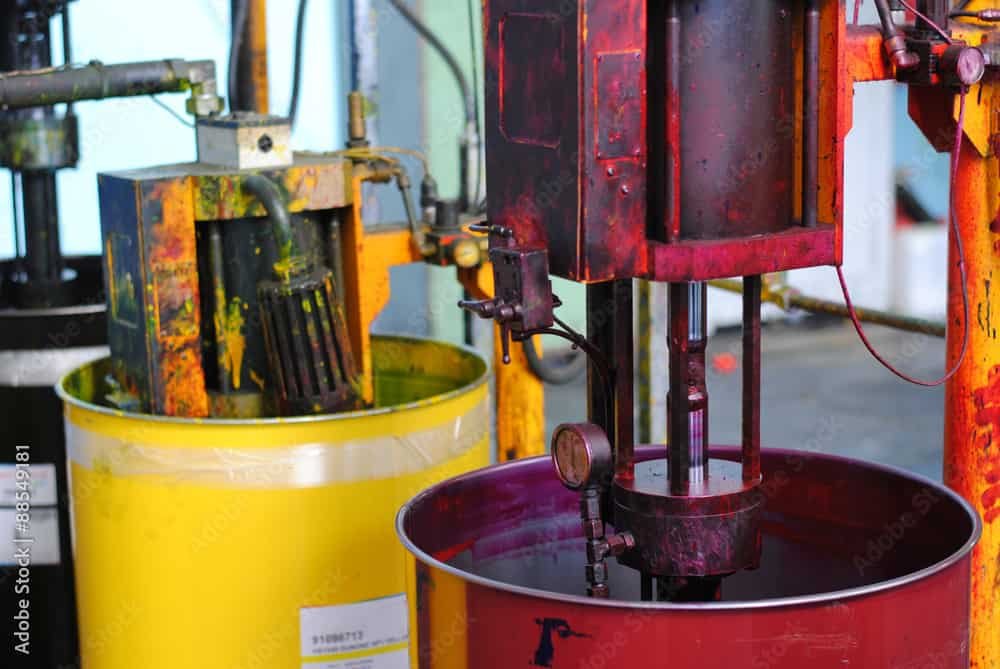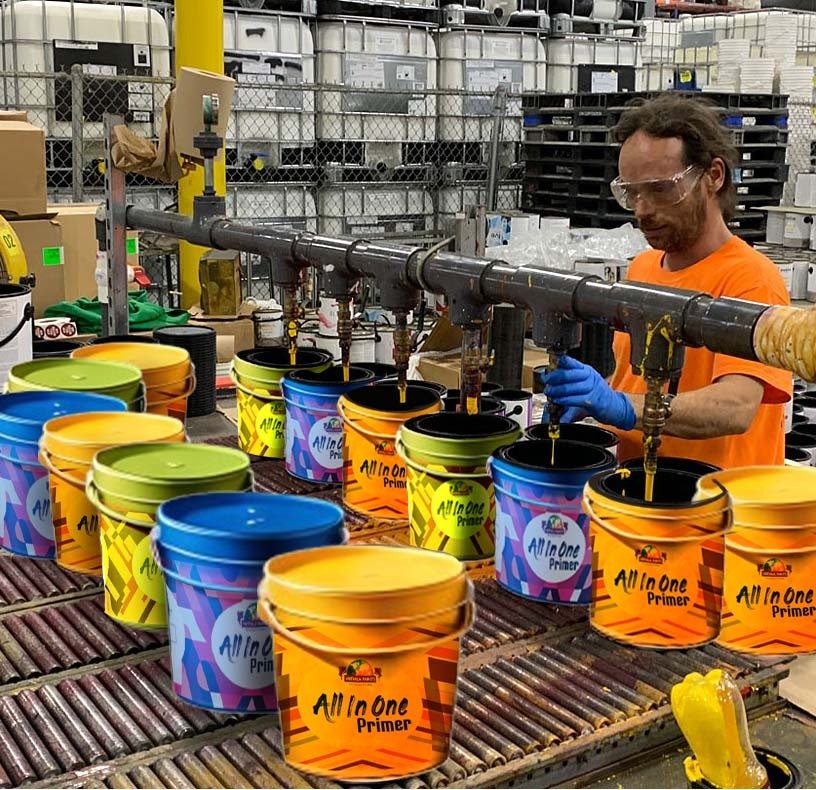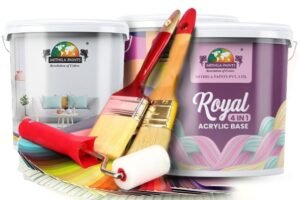Introduction to Paints Manufacturing in Maharashtra
Maharashtra, a state renowned for its industrial advancements, holds a pivotal role in India’s paints manufacturing industry. The state accounts for a significant share of the country’s paint production, owing to its historical background invested in innovation and development within this sector. The origins of paint manufacturing in Maharashtra can be traced back several decades, marking its evolution from small-scale enterprises to large, sophisticated production units that supply both national and international markets.
Over the years, Maharashtra has ascended as a substantial player in the paints industry, driven by its strategic advantages. One of the foremost factors is the abundant availability of raw materials. The state is rich in natural resources, which provides an ample supply of essential inputs like pigments, solvents, and resins required for paint production. This ease of access not only reduces transportation costs but also allows manufacturers to maintain a consistent production flow.
Furthermore, Maharashtra’s advanced infrastructure, including well-developed ports, highways, and industrial zones, facilitates seamless logistical operations, ensuring timely delivery of raw materials and finished products. The presence of several Special Economic Zones (SEZs) further provides a conducive environment for setting up large-scale manufacturing units. These infrastructure facilities significantly contribute to the state’s ability to attract investments from leading paint manufacturers.

The availability of skilled labor is another critical factor that strengthens Maharashtra’s position in the paint manufacturing landscape. The state boasts numerous renowned educational institutions and vocational training centers that produce a workforce proficient in industrial and chemical engineering disciplines. This skilled labor force is crucial for maintaining high standards of production and innovation in the paint manufacturing processes.
Additionally, Maharashtra’s proximity to major markets in India, such as Mumbai and Pune, coupled with its export-friendly policies, bolsters its capabilities to serve a wide consumer base efficiently. Consequently, the paint manufacturing industry in Maharashtra not only supports the state’s economy by generating employment and revenue but also plays an integral role in meeting national and global demands for various types of paints, including household, industrial, and decorative segments.
History and Evolution of the Paint Industry in Maharashtra
The paint industry in Maharashtra has undergone significant transformations since its inception. Initially, the industry was dominated by small-scale operations, often family-owned, that focused on producing traditional, hand-crafted paints. These early operations largely catered to local markets, with a limited range of products and simple manufacturing techniques.
As industrialization took root in India, Maharashtra began to emerge as a strategic hub for various industries, including paints. The pivotal moment came in the mid-20th century when technological advancements started to penetrate the sector. The adoption of machinery and more sophisticated production methods allowed for the mass production of high-quality paints. This period saw the introduction of synthetic pigments and binders, which significantly enhanced the durability and variety of paints available.
Regulatory changes also played a crucial role in shaping the paint industry in Maharashtra. The introduction of environmental and safety standards pushed companies to innovate further and adopt eco-friendly practices. This led to the development of low VOC (Volatile Organic Compounds) paints, which are less harmful to both the environment and human health.
Significant players emerged during this evolutionary phase, marking Maharashtra’s ascent as a pivotal player in the global paint industry. Companies like Asian Paints, Nerolac, and Pidilite not only expanded their product portfolios but also invested heavily in research and development. These pioneers brought in advanced technologies and state-of-the-art manufacturing facilities, placing Maharashtra firmly on the world map of paint manufacturing.

Today, Maharashtra is home to several multinational paint companies and a thriving market that includes the production of specialized paints such as Mithila paints. This continued growth and adaptation have positioned the state as a leader in the paint manufacturing industry, driving innovations and setting benchmarks for quality and sustainability.
Raw Materials Used in Paint Manufacturing
In the realm of paint manufacturing, a variety of raw materials play pivotal roles in creating high-quality products. Key components include pigments, solvents, additives, and resins. Each of these materials contributes to the distinct properties and performance characteristics of the final paint product, making their selection and sourcing crucial for manufacturers.

Pigments are responsible for providing color and opacity to paints. These can be either organic or inorganic. In Maharashtra, pigments can be sourced both locally and internationally, with places such as Nagpur being notable for supply chains in synthetic pigments. Solvents, another critical component, are used to dissolve the other ingredients and facilitate the application of paint. Typical solvents include water, hydrocarbons, and alcohols. Maharashtra’s chemical industry, particularly in regions like Thane and Mumbai, provides a robust supply chain for these essential materials.
Additives are tailored to enhance certain properties of paint, such as viscosity, drying time, and resistance to environmental factors. Depending on the intended use of the paint, additives can include drying agents, anti-settling agents, and flow enhancers. Resins, which bind the pigments and create a film on the painted surface, are another indispensable component. Oil-based resins and acrylics generally come from regions rich in petrochemicals, a sector that Maharashtra excels in, thanks to its industrial refinement facilities.
Considering environmental and economic aspects, the local sourcing of raw materials is burgeoning. Maharashtra, with its extensive industrial landscape, offers a balance of imported and locally sourced materials, thereby promoting sustainable practices. For example, the increase in local production of specific pigments and resins diminishes a region’s carbon footprint tied to transportation and supports local economies. Balancing global and local sourcing strategies provide manufacturers with flexibility and cost efficiency.
The multifaceted approach to sourcing raw materials is essential for maintaining the high standards that Maharashtra’s paint industry is known for. With a blend of local innovation and global resources, manufacturers can produce high-quality paints that fulfill diverse market needs.
Manufacturing Process and Technologies
The manufacturing process of paints in Maharashtra, including the renowned mithila paints, begins with the crucial stage of premixing. During this phase, raw materials such as resins, solvents, pigments, and additives are blended together to form a consistent mixture. This preliminary blend ensures that all components are evenly distributed before further processing.

Following premixing, the next critical step is milling. Here, the mixed ingredients are subjected to high-shear dispersion to achieve a fine particle size and uniform distribution. The milling process is fundamental in enhancing the quality and performance of the paint by ensuring a smooth texture and vivid color consistency.
Once the pigments and resins are thoroughly milled, the blend moves to the blending stage. Advanced blending equipment ensures the precise combination of additional elements, if necessary, including stabilizers and different types of emulsifiers. This step guarantees that the paint’s composition remains stable and effective under various application conditions.
Tinting follows blending, where exact shades are produced by adjusting the color formulations. Technicians employ sophisticated tinting machines capable of matching colors with high accuracy, ensuring that the final tones meet stringent quality standards and customer expectations.
The final stage in the manufacturing process is packaging. Modern packaging technologies have revolutionized this stage by incorporating automated systems that fill, seal, and label the paint containers efficiently. This automation not only improves productivity but also minimizes human error, ensuring precision in every batch.
In Maharashtra, the paint industry is also adopting advanced technologies to stay at the forefront of innovation. Automation plays a pivotal role, with smart factories leveraging robotics and AI to streamline operations, enhance quality control, and reduce labor costs. Additionally, environmentally friendly practices are gaining traction. The development of low-VOC (volatile organic compounds) paints and sustainable manufacturing processes, such as recycling solvents and reducing waste, reflect the industry’s commitment to ecological stewardship.
As the paint manufacturing landscape in Maharashtra continues to evolve, these technological advancements and sustainable practices ensure that products like mithila paints maintain their reputation for quality and environmental responsibility.
Major Players and Market Structure
The paint market in Maharashtra is a dynamic and highly competitive arena, with both domestic and international companies jostling for market share. Leading the charge among local manufacturers are giants like Asian Paints, Nerolac, and Indigo Paints. These companies have long-established their presence through extensive distribution networks, innovative product ranges, and robust marketing strategies.
Asian Paints, headquartered in Mumbai, is not only a dominant player in Maharashtra but also one of the largest paint companies in India. Their portfolio spans decorative paints, industrial coatings, and even home improvement solutions. Recent developments see them focusing on color technology and customer engagement through digital platforms, thereby setting new benchmarks in the industry.
Nerolac, another significant player, is well-known for its versatile range of products catering to both residential and industrial segments. The company’s emphasis on eco-friendly and sustainable paints has struck a chord with environmentally conscious consumers. Their strategic partnerships and collaborations have played a crucial role in maintaining a competitive edge.
Indigo Paints, although a relatively new entrant, has rapidly climbed the ranks through aggressive marketing and innovative product offerings. Known for their unique product formulations such as metallic emulsions and ceiling paints, Indigo Paints has carved out a niche market for itself. Their recent IPO launch further cements their growing influence in the sector.
On the international front, companies such as Akzo Nobel and Berger Paints have fortified their presence in Maharashtra by leveraging their global expertise and advanced manufacturing technologies. Akzo Nobel, for instance, offers a wide array of high-performance coatings that cater to various industrial sectors, reinforcing their market positioning.
In the realm of art and culture, companies specializing in niche products like Mithila paints are also noteworthy. These traditional paints, rooted in the rich heritage of Mithila art, are gaining popularity for their unique aesthetic appeal. As awareness about regional art forms grows, the demand for Mithila paints is likely to see an upward trend, adding another layer to the diverse paint market in Maharashtra.
Collectively, these players contribute to a vibrant and evolving market landscape, reflecting a blend of innovation, tradition, and sustainability. The competition drives continuous improvement, ensuring that consumers in Maharashtra have access to a wide range of high-quality paint options.


Regulatory Environment and Compliance
The paint manufacturing industry in Maharashtra operates under a stringent regulatory framework designed to ensure safety, environmental preservation, and product quality. Compliance with these regulations is essential for manufacturers, not just to avoid legal repercussions but to enhance consumer trust and market growth.
Environmental regulations are amongst the most critical aspects of compliance. The Maharashtra Pollution Control Board (MPCB) has enacted strict guidelines to minimize the environmental impact of paint manufacturing. Regulations cover emissions, wastewater discharge, and hazardous waste management, compelling manufacturers to adopt cleaner technologies and eco-friendly practices. Compliance with these norms often necessitates innovative approaches to both waste reduction and resource utilization.
When discussing safety standards, the Occupational Safety and Health Administration (OSHA) guidelines and the Factories Act, 1948, are pivotal. These regulations emphasize worker safety, demanding rigorous controls in handling chemicals, adequate ventilation, and the use of personal protective equipment (PPE). Adherence to these standards is non-negotiable and requires ongoing employee training and supervision.
Additionally, manufacturers must secure various industry certifications to confirm their commitment to quality and safety. ISO certifications, such as ISO 9001 for quality management systems and ISO 14001 for environmental management systems, are often pursued. These certifications not only streamline operations but also improve credibility in both domestic and international markets.
The regulatory framework significantly influences manufacturing processes and product formulations. Stringent emissions standards, for instance, have driven the shift towards water-based and low-VOC (volatile organic compounds) paints, which are less harmful to the environment. Moreover, keeping up with global trends, the demand for sustainable products like Mithila paints, which are eco-friendly and have a lower carbon footprint, is rising.
Overall, Marathi paint manufacturers must remain vigilant and proactive in regulatory compliance. This ensures not only the legality but also fosters a sustainable and responsible industry presence, ultimately benefiting both the environment and the end consumers.
Sustainability and Environmental Impact
The paint manufacturing industry in Maharashtra, like many industrial sectors, faces growing pressure to minimize its environmental impact and adopt sustainable practices. Manufacturers are increasingly recognizing the need to reduce their carbon footprints and are actively exploring ways to incorporate green technologies and eco-friendly raw materials into their operations. This paradigm shift not only aligns with global sustainability goals but also caters to a more environmentally conscious consumer base.
One of the primary efforts in mitigating environmental impact involves optimizing energy usage during the production processes. Companies are investing in energy-efficient machinery and infrastructure, which significantly cuts down greenhouse gas emissions. Additionally, the adoption of renewable energy sources, such as solar and wind power, for factory operations is becoming more prevalent. These initiatives showcase the industry’s commitment to reducing reliance on fossil fuels.
Eco-friendly raw materials are becoming the cornerstone of sustainable paint manufacturing in Maharashtra. Natural pigments, non-toxic solvents, and biodegradable additives are being integrated into paint formulations to decrease hazardous waste and minimize water pollution. Innovative research has led to the development of advanced bio-based materials that perform comparably to traditional, synthetic counterparts while being significantly less detrimental to the environment.
Several companies in Maharashtra serve as exemplars of sustainable practices. For instance, Mithila Paints has made substantial strides by rolling out a product line that exclusively uses organic and biodegradable ingredients. Their approach not only caters to eco-conscious consumers but also sets a benchmark for other manufacturers in the region. In another case, paint manufacturer Eco-Palettes has implemented a closed-loop system where waste products are recycled and re-entered into the production process, drastically cutting down on landfill contributions.

These case studies reflect a broader industry trend towards sustainability and a reduced environmental footprint in Maharashtra’s paint manufacturing sector. By prioritizing eco-friendly innovations and adopting green technologies, the industry is contributing to a healthier planet while meeting the demands of an increasingly aware and discerning market.
Future Trends and Prospects
The paints manufacturing industry in Maharashtra is poised for significant transformations in the coming years. With advancements in technology continuing to evolve, the sector is expected to see substantial growth driven by innovative solutions and improved efficiency in production processes. The integration of smart manufacturing technologies, such as IoT and AI, is anticipated to streamline operations, reduce costs, and enhance the quality of products like Mithila paints. These technological advancements will likely enable manufacturers to respond more agilely to market demands and consumer preferences.

Consumer preferences are also undergoing a shift, with an increasing focus on sustainability and eco-friendly products. There is growing demand for paints that are low in volatile organic compounds (VOCs) and free from harmful chemicals. This trend is leading to the development and adoption of green manufacturing practices. Manufacturers in Maharashtra are expected to invest more in research and development to create environmentally-friendly products that meet these new customer expectations. Mithila paints, known for their vibrant and intricate designs, could see a surge in demand if they adapt to these sustainable practices.
Government policies will play a crucial role in shaping the future landscape of the paints manufacturing industry. The Maharashtra state government has been supportive of industrial growth, and future policies are expected to focus on promoting sustainable practices and technological advancements. Incentives and subsidies for clean energy usage, waste management, and water conservation will likely encourage manufacturers to adopt greener processes. These initiatives will not only benefit the environment but also enhance the overall market competitiveness.
Looking at market growth and investment potential, the paints manufacturing industry in Maharashtra appears promising. Analysts predict steady growth fueled by urbanization, infrastructure development, and rising disposable incomes. Investment opportunities are abundant, particularly in sectors like residential and commercial construction, which fuel the demand for quality paints, including traditional options like Mithila paints. The blend of tradition with innovation in these products offers a unique selling proposition that could attract investors seeking growth in this vibrant market.
